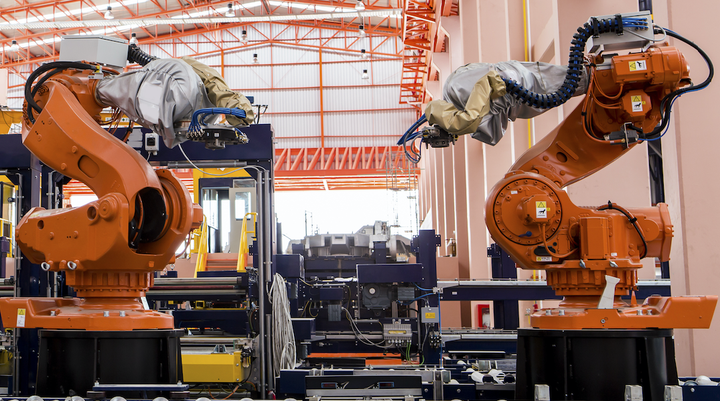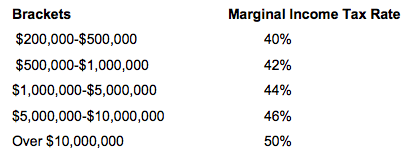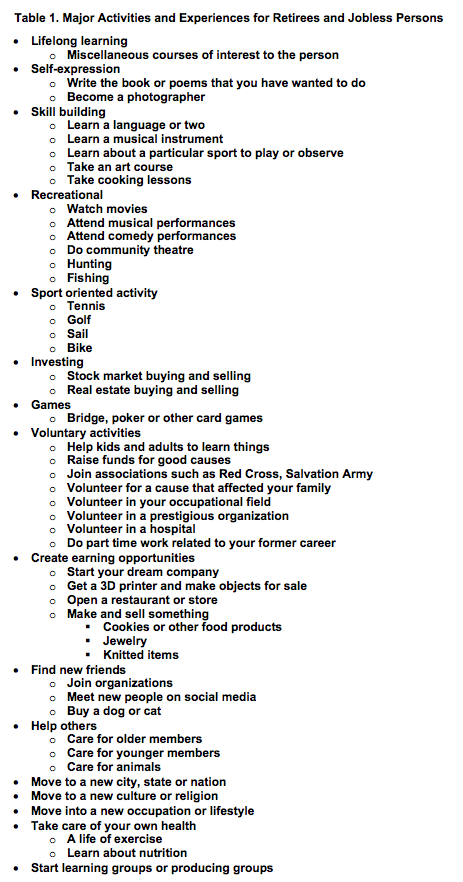
We all grew up in a world of work. To live, we had to work. And there was much work to do. We trusted that there will always be jobs requiring workers.
Most of us were not well paid. To acquire what we needed, we had to borrow. We needed consumer loans, mortgages, and credit cards. Most of the time we had debt and we had to pay interest to the lenders.
This system worked well as long as there were persons with wealth and capital to hire us or there were government agencies to give us jobs.
Occasionally, our system fails to produce enough jobs. Jobs get scarce during recessions. A recession leaves people with less money to buy things, and this leads to fewer jobs to make things. Those without jobs go on welfare and get money from government programs and do-gooders. But each recession is temporary and jobs eventually return.
Today a new disruption has taken place in our job picture. The robots are coming!
A growing number of jobs are being done by machines, robots or artificial intelligence. There will still be jobs but there will be fewer jobs done by human beings. In the exploding Digital Age, more persons will have to become self-sufficient or find other ways to become relevant.
How Will We Live in a Jobless World?
We can’t let jobless people starve or fail to pay their bills. It is bad enough that their lives may have lost meaning. The narrative about leading a life of work is gone. In good conscience, those who have work and income must support those who want to work but can’t find work or income. The case for a nationwide Universal Basic Income would be strong once jobs disappear.
If we reject the idea of Universal Basic Income, we will face widespread unrest. The populist movements we see around the world, from Trump, to Brexit, and the resurgence of the far-right across Europe are reminders that we must heed the lessons of history. We must ask if the fruits of capitalism can be shared more broadly. Otherwise, our democracy may be doomed.
Businesses must understand that in order to sell products, they must have customers. And, if people can’t afford their products, they aren’t going to be in business for long. Without a living wage for those who are employed and a universal basic income for those who can’t find jobs, there is no future.
Death: The Prospect of War, Disease, and Other Calamities
Nations often go to war when economic difficulties get out of hand. Now with global warming, we will see more natural calamities – floods and fires. We will need more resources to cover these disasters and help the victims.
Our current social security system and our healthcare system are unable to cope with natural disasters or with joblessness. We certainly need a single-payer healthcare system. Such a system will be simpler, more efficient, involve less cost, and satisfy more consumers.
Taxes: The Art of the Deal?
Donald Trump and the GOP have announced plans for massive tax “reform” which, on closer inspection, are nothing more than welfare for the rich. The rich had to pay income taxes at a 39.6% maximum rate. The GOP has proposed a maximum income tax rate of 33%. That alone removes an incredible amount of tax revenue that could have helped the middle and working class. The GOP then proposes eliminating estate taxes which would remove another incredible amount of tax revenue that could have helped the middle and working class.
Republican logic holds that the rich will have more money to build factories and stores. But we don’t need more factories or stores when we already are producing more goods than can be sold. And where would the customers come from when they don’t have good paying jobs or jobs at all.
Now let’s consider four possible solutions for supporting the jobless
First, the government can always print money and distribute money to the jobless. It may even require them to work for the money. But this increases our federal deficit and sooner or later steps up inflation. This means that the jobless will face higher prices and be less able to satisfy their needs. Distributing printed money to the needy might ultimately worsen their crisis.
Second, the government can raise taxes on the wealthy. This would reverse the last sixty years where taxes on the wealthy were substantially reduced. To the extent that taxes can be increased on the wealthy, government would need to print less money. We recognize that passing higher taxes on the wealthy may discourage them from working or investing. The rich may even hide or send their income or wealth abroad. Hopefully, raising the tax on the wealthy won’t reduce the number of jobs.
The third possibility is to support the jobless by drawing down money from our huge defense budget. Do we keep spending $524 billion a year on defense or do we spend $100 billion less to support the jobless?
The fourth possibility is to pay for the jobless by levying a new tax on companies. It is companies that have moved production abroad and have introduced robots, more AI and caused fewer jobs. Companies can be taxed according to how many jobs they destroyed through globalization or technology.
Bill Gates has recommended a “robot tax.” In an interview, he said: Right now, the human worker who does, say, $50,000 worth of work in a factory, that income is taxed and you get income tax, social security tax, all those things. If a robot comes in to do the same thing, you’d think that we’d tax the robot at a similar level.
The money needed to support the loss of jobs can be raised through some combination of printing money, placing higher income and wealth taxes on the wealthy, reducing the defense budget which is full of waste, and placing a tax on companies in proportion to how many jobs they destroy.
Why Place a Tax Increase on the Wealthy?
The tax increase should not be placed on the working class or the middle class. It should be placed on the wealthy. The wealthy won’t suffer any material deprivation in paying a higher tax. Understandably, they may regard the higher tax as unjust and discriminatory. At the same time, we believe that they would prefer paying the higher tax to the alternative of facing a workers’ revolt or revolution that would end up confiscating their property and wealth.
It is hard to defend America’s grossly unequal distribution of income and wealth in the face of growing joblessness and poverty. The average U.S. CEO is paid over $10 million a year in salary, bonus, and stock options. He usually is paid 300 times what the average worker is paid. His present tax rate is 40 percent. This leave him with $6 million after taxes.
Suppose the norm becomes paying a U.S. CEO only 100 times (not 300 times) the average worker pay. If the average worker earns $50,000, the company CEO would take home $5 million dollars a year ($50,000 x 100), not $10 million. The CEO will pay 40 percent in taxes. This will leave him $3 million ($5 million x .6). Presumably, the CEO can live comfortably on $3 million a year. This leaves tax revenue of $2 million a year ($5 million x .4) from one CEO for the government to redistribute to 40 ($2 million/$50,000) jobless people.
This analysis has been premised on keeping the maximum income tax rate at 40 percent. There is another way to control big company payouts. Return to the use of brackets for incomes higher than $200,000:

Besides the higher tax on income, should the wealthy also pay a wealth tax? This is advocated by the French economist Thomas Piketty. He advocates putting a progressive tax on wealth. The American wealthy is usually described as the 1% class, consisting of approximately 1,170,000 households. A further distinction can be drawn between the top 1% and the top 0.1% of the richest households, namely the richest 1,170 households. The wealth owned by the richest 1,170 is almost uncountable. An Oxfam study found that the eight richest people, six of them Americans, own as much wealth as “half of the world’s total wealth.”
Many of the super wealthy inherited their wealth. They employ money managers and pay them to make more money with their money. Much of their money comes from capital gains that are taxed at a lower income tax rate. Much of their money is untaxed in obscure banks and islands as revealed by the Panama papers: “11million leaked documents reveal how TWELVE world leaders – plus Russian leader's inner circle, British politicians and Lords – hide their millions in tax havens.” The super wealthy sit back and the money keeps flowing in without much effort on their part. Savers are necessary to an economy but this would happen even without such a great concentration of wealth.
While households pay an annual income tax, there is no annual wealth tax charged to households. The only wealth tax occurs when the heads of these households die. These households have managed in most cases to pass on substantial wealth to their children and grandchildren in specific amounts permitted by the law. What remains as not passed on wealth is taxed. A married couple can exempt around $10 million from estate taxes. The rest is taxed at about 60 percent. The other 40% is distributed to their heirs.
The Republicans want to eliminate the estate tax entirely. This would substantially increase the magnitude of wealth concentration and inequality in the nation. Many Democrats would prefer the opposite, to increase the estate tax from 60 percent to something like 80 percent.
Many wealthy people send their money abroad or buy non-taxable assets to preserve their capital. If they anticipate higher tax rates, they will probably increase their efforts to shelter their wealth.
Still, the picture is clear. The best way to support the increasing number of jobless persons is to raise income and wealth taxes on the wealthy.
The Counterargument of the Rich
Wealthy persons hold that their earnings were obtained by legal means and often as the result of having better training and skills and judgment. They earn their reward by taking greater risks. The rich argue that they make substantial contributions to charity that often supports the poor. They say that taxing the rich will lower charitable support of museums, universities, performing arts organizations, and other worthwhile institutions. The rich say that they prefer to choose where their money should go than let the government choose how it wants to use their “taxed money.”
Wealthy persons present a further line of argument. They hold that their investment is the main force raising the nation’s GDP. A higher GDP produces more money for everyone. The rich deeply believe that smaller government, lower taxation, and fewer regulations will increase GDP.
This argument is called the “trickle down” theory, that all boats will rise from economic growth. This ignores, however, the major thesis in this article, that the number of jobs will grow but not the number of employed people. The jobs will increasingly be done by robots and artificial intelligence (Ai).
We are making the following assumptions:
1. The rate of job destruction with robots and AI will exceed the rate of job creation used to make robots and AI.
2. The population won’t shrink in size. If it got dramatically smaller, there may be enough jobs for a while.
We are still left with the problem of how to support an increasing number of jobless human workers.
How is the Money to be Distributed to the Jobless Workers?
The U.S. will have to decide on the level of a Universal Basic Income (UBI). Let’s call this a “Livable Income.” If a household consist of only one person, how much does a person need in order to cover the cost of housing, food, clothing, fuel, and so on. Let’s assume that it is $50,000 a year. If the household consists of two persons, let’s assume that it won’t double because the two are sharing the household and energy expenses. If the household consists of three or more persons, numbers would be worked out for each size household.
If a household earns an adequate amount of job income, it will not receive any government money. Government money is only paid to make up the difference between the household’s income and the “livable income.”
The question will be raised: “How much will it cost annually to support those who are permanently jobless?” Admittedly, the cost can be huge. Suppose two million people are permanently jobless. Supporting them at $50,000 a year would cost $100 billion ($50,000 x 2,000,000). We already discussed the combination of ways to raise the money.
Finding Meaning in a Life Without Work
We need to acknowledge that a very large number of paying jobs will continue to exist, especially those that need a more personal touch or judgment. Not every job can be done by a robot or AI. We will still need policemen, firemen, doctors, lawyers, engineers, architects, social workers, electricians, carpenters, plumbers, bankers, designers, engineers, nurses, caretakers, and so on. Our educational system will continue to pass on basic knowledge and skills and prepare people for existing jobs that are not likely to be overtaken by robots or AI.
Those persons who are not able to find a paid job will have to consider other life pursuits. Such persons face the same problem as retirees. What are meaningful activities for people who are now retired to do with their time and energy? I prepared Table 1 that lists major activities for retirees and jobless workers.

Hopefully most jobless persons will find one or more activities that could bring meaning into their lives and a measure of happiness.
Conclusion
Our hope, of course, is that the nation continues to provide enough jobs for our growing population. This could happen if the new industries that create robots and artificial intelligence provide enough jobs to offset the number of jobs they destroyed. Or we might imagine many new jobs coming from our need to rebuild our failing infrastructure. Or we can hope that many new products and services will come into being that are job-creating. Or we can expect that many service jobs for caring for children, seniors, the ill and others who need services of various kind.
We hope that we can revitalize community life where people know each other and care for each other. Those without jobs can focus their time on personal development and on activities helping others. People have to design their lives and choose activities that will provide personal meaning and hopefully a measure of well-being and happiness.
Visit FIXCapitalism.com >>
Follow us on Twitter >>